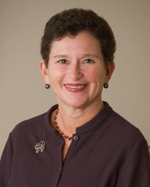Read the U.S. Green Building Council Greenbuild story here:
From SU News
By Keith Kobland // Thursday, November 15, 2012
 As the not-so-great philosopher Kermit (the frog) once opined, it’s not easy being green. Regardless of that mindset, a growing number of communities are realizing the quality-of-life benefits of “going green.” The Central New York community and Syracuse University are leading the charge and receiving recognition as a result.
As the not-so-great philosopher Kermit (the frog) once opined, it’s not easy being green. Regardless of that mindset, a growing number of communities are realizing the quality-of-life benefits of “going green.” The Central New York community and Syracuse University are leading the charge and receiving recognition as a result.
The U.S. Green Building Council (USGBC) is recognizing SU and Chancellor and President Nancy Cantor with the 2012 Green Building Council Leadership Award.
“The green building industry didn’t grow into a global movement by chance. We got here because of the hard work and innovation of sustainability pioneers and visionaries,” says Rick Fedrizzi, president, CEO and founding chair of the USGBC. “We are thrilled to recognize many of those individuals in this year’s awards.”
Going green has little to do with color, and everything to do with cleaner construction using materials that are potentially more friendly to the environment and to an individual’s health. A green infrastructure is more energy efficient, requiring a smaller carbon footprint.
Chancellor Cantor, according to the USGBC, has elevated the mission of green building on Syracuse University’s campus through numerous LEED building projects and a school-wide goal to achieve carbon neutrality by 2040.
“This USGBC Leadership Award speaks to the power of innovation through collaboration,” says Cantor. “We can only tackle the profoundly complex challenges we face today, such as achieving sustainability, if we partner across sectors and roll up our sleeves together. That’s exactly what we’re trying to do in Syracuse and across Central New York, not only among city, county and University leaders, but with the private sector and our neighborhoods, as well. We’re deeply grateful for this recognition, which we consider an achievement for our entire community.”
A major component of this is the Connective Corridor, connecting the Syracuse University campus with the Near West Side neighborhood of Syracuse. “This is an honor,” says Linda Dickerson Hartsock, director of Syracuse University’s Office of Community Engagement and Economic Development, “especially since it is such a significant international award, and a great affirmation of the Syracuse University, City of Syracuse and Onondaga County partnership.”
Dickerson Hartsock points out the many sustainable aspects of the Connective Corridor. Among them:
• complete street design integrated with pedestrian and bike pathways and traffic-calming measures to encourage multi-modal use;
• innovative green infrastructure design (rain gardens, porous concrete parking lanes, permeable pavers, tree trenches, native landscaping);
• free public transit with integrated bus stops and smart transportation technologies to enhance usage (120,000-plus riders per year);
• aesthetic lighting featuring custom-designed, energy-efficient lighting developed by local entrepreneurs;
• “Innovation District” that is a testbed for new technologies, such as sensors and other advanced controls developed by local entrepreneurs;
• public art and cultural space activation;
• development of green spaces based on sustainable, context-sensitive, landscape architecture design;
• focus on LEED projects along the corridor and Near West Side, with four LEED Platinum commercial buildings (Syracuse CoE, Hotel Skyler, King+King and Lincoln Supply), two LEED Platinum residential buildings (From the Ground Up homes), along with the Near West Side’s designation as the first LEED ND (neighborhood) in the country; and
• partnership with city and county economic development on urban in-fill, fostering principles of smart growth.
What is unique about the green infrastructure?
• partnership with Onondaga County’s Save the Rain Program (Forman Park’s green infrastructure elements included more than 4,000 shrubs and perennials, which will capture about 119,000 gallons of stormwater each year);
• green streetscapes include porous pavement, plantings, geogrids, silva cells, catch basins and rain garden, along with native plant species that don’t require pesticides and fertilizers; and
• combined Connective Corridor green infrastructure projects will harvest and manage 5.9 million gallons of stormwater each year.
How are students involved?
• Students and faculty from Syracuse University and SUNY ESF have been involved in many aspects of the project—from research to design, implementation and analysis.
• The project is conceived as a living laboratory for sustainability and a vehicle for putting research and ideas into action.
Along with Chancellor Cantor, Syracuse Mayor Stephanie Miner and Onondaga County Executive Joanie Mahoney are both being honored as well. Syracuse and Onondaga County have taken a lead role in the green building movement in Central New York.
More coverage:
Green Roof project

Leave a Reply